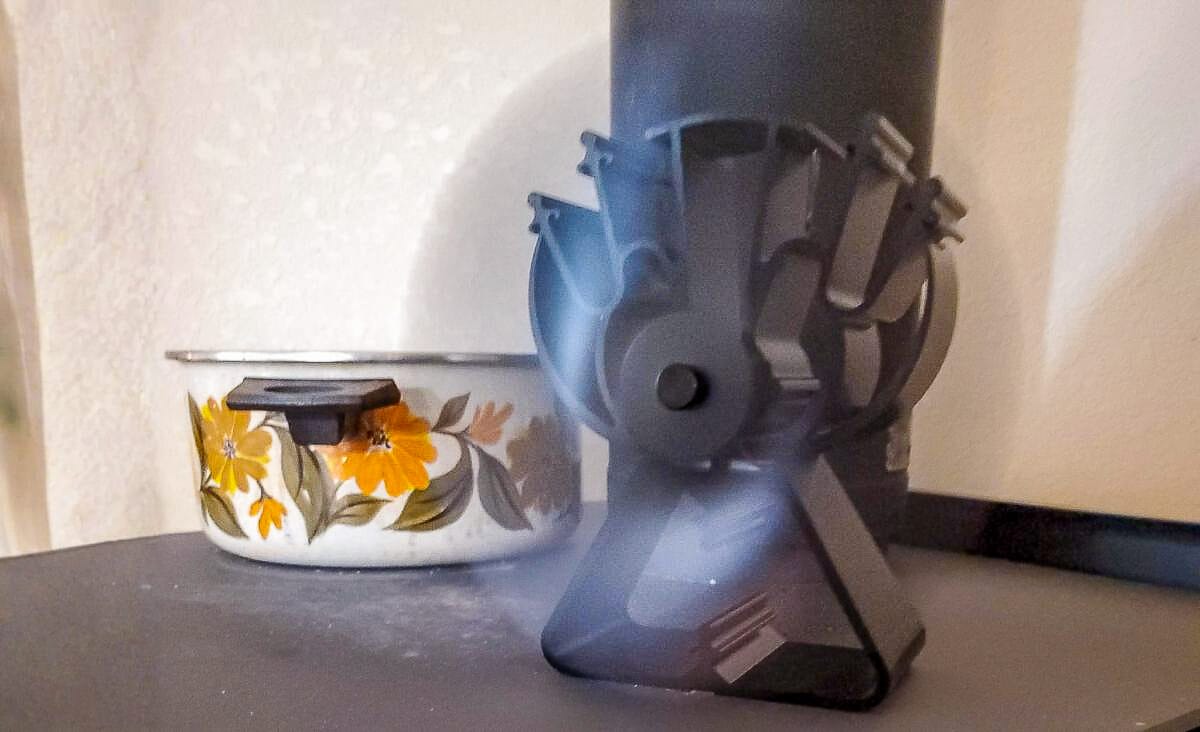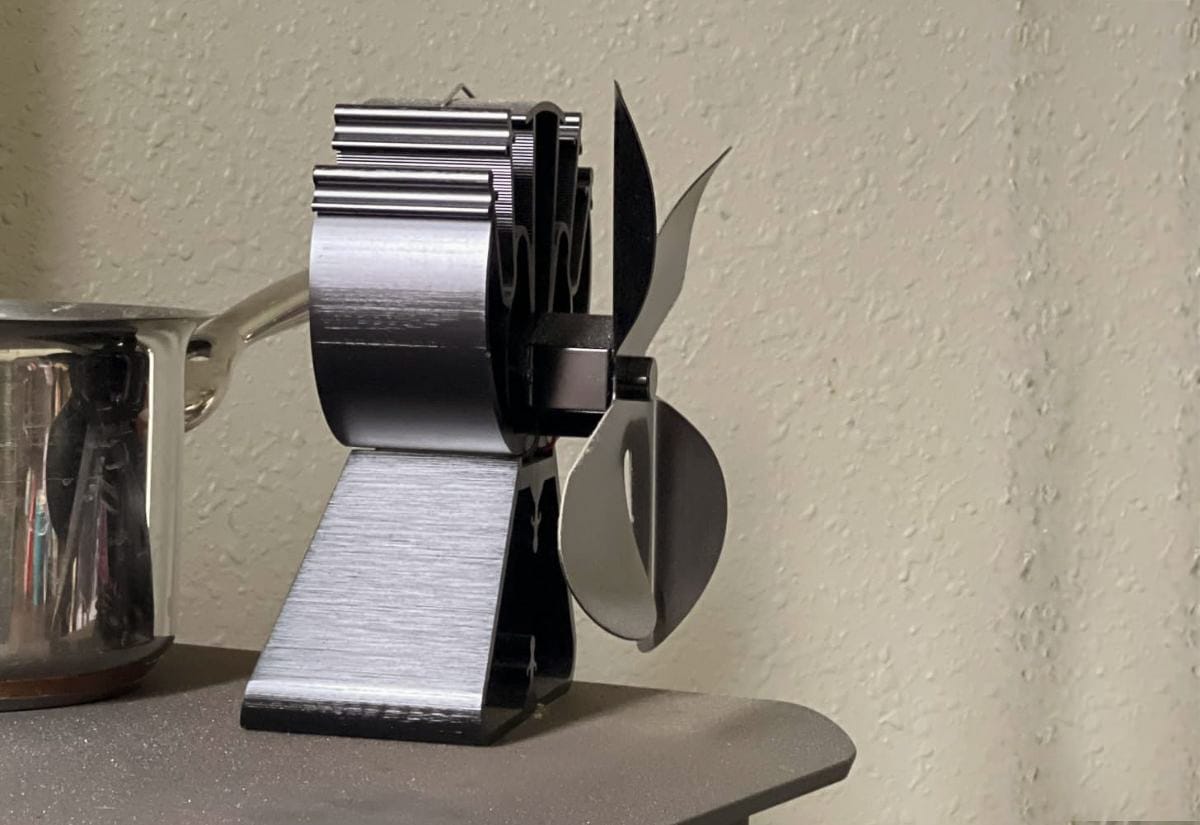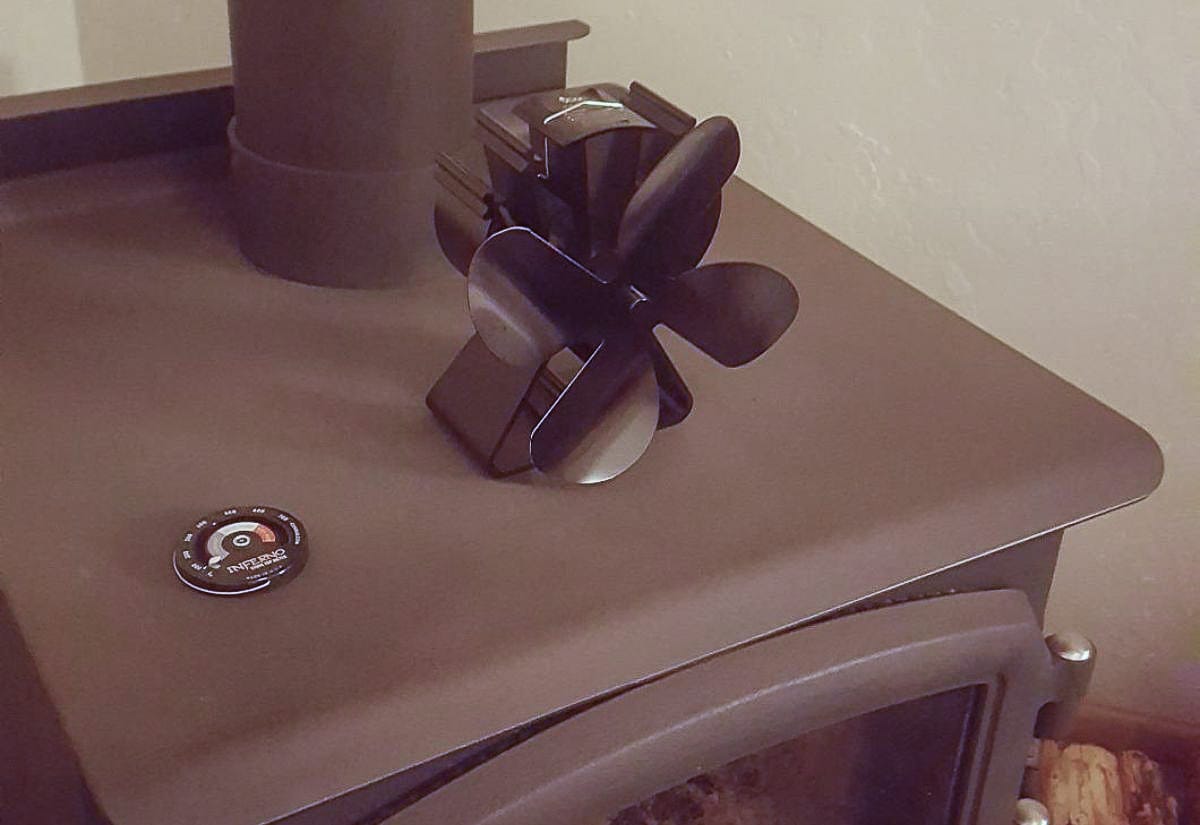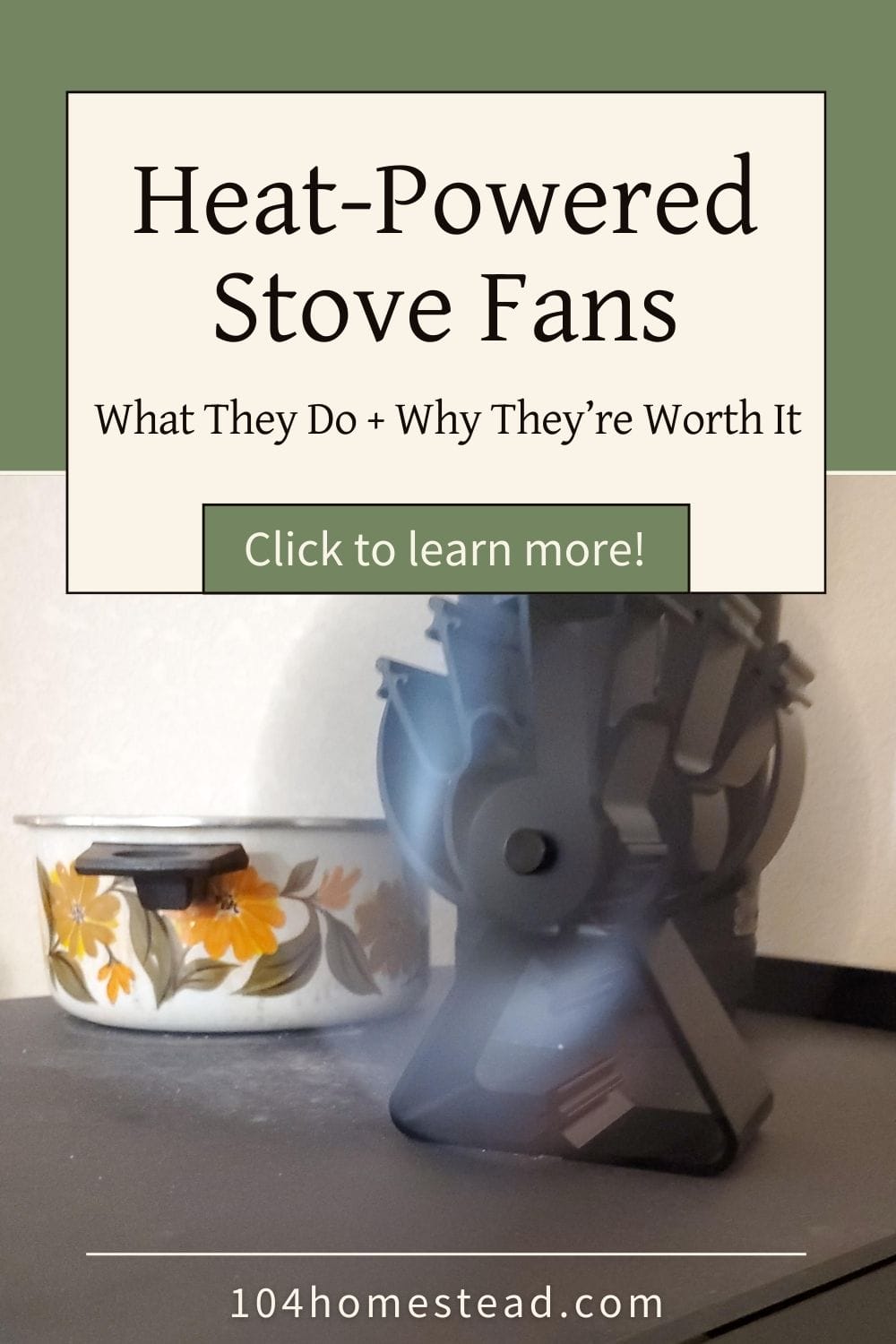How Heat-Powered Stove Fans Work (+ Why I Use Them Every Winter)
Heat-powered stove fans make wood heat feel more even and efficient. Learn how they work, where to place them, and what to look for in a good model.

If you’ve ever sat beside a wood stove on a cold night and wondered why you are toasty warm while the opposite corner of the room still feels like January, you’re not alone. When I first started heating with wood, I assumed the stove would warm the whole space. It didn’t. I’ve definitely done laps around the living room hunting for the one warm pocket of air.
Somewhere between figuring out how to keep the stove glass clean and which wood throws the best heat, I came across heat-powered stove fans. I’ll be honest, I didn’t believe the hype at first. A fan that runs on nothing but heat? I didn’t think it would do much. Turns out, it works… and it works well.
So let’s talk about how these fans work, why they’re worth it, and what I’ve learned from running them on my stoves for years.
How Heat-Powered Stove Fans Work
A heat-powered stove fan uses something called a thermoelectric module to turn heat into electricity. When the bottom of the fan gets hot and the top stays cooler, that temperature difference creates a tiny electrical current that spins the blades without batteries or cords. The fan pushes warm air out into the room instead of letting it drift straight up to the ceiling.
If your stove heats well but your room still has chilly corners, a fan can make a noticeable difference.
A Look at the Thermoelectric Stuff
Once your fire gets going and the stovetop heats up, the base of the fan absorbs that heat. Inside the fan is a small square called a Peltier module (basically two ceramic plates with semiconductor material sandwiched in between). One side gets hot, one side stays cooler, and that contrast creates enough electricity to spin a tiny motor.
That’s it. No wires to tuck away, no charging cables to lose, and no worrying about replacing batteries during a storm.
And yes, the hotter your stove gets, the faster the fan spins. Mine usually starts turning when my stovetop thermometer reads around 140–150°F, though this varies by model.
Do Heat-Powered Stove Fans Really Work?
The quick answer? Yep. Just know what it can (and can’t) do. A stove fan won’t heat your home like a furnace, but it will help your stove’s warmth reach all those chilly corners your radiant heat never quite touches.
In my house, the difference is big enough that I run one fan on my main stove and another on my cookstove. The warm air feels more even, and I can use a little less wood to stay comfortable. When you go through as much firewood as we do in a Maine, saving that little bit of wood every week adds up.
I’ve used an EcoFan before (industry standard, excellent warranty) but they’re on the pricey side. These days I use the VODA 4-Blade Thermoelectric Fan on both stoves. They’ve lasted four years so far and still run strong (one even survived my dropping it into the firebox).
Choosing the Right Stove Fan for Your Setup
Fan Size: Bigger fans push more air. My VODA lands right in the sweet spot. Not huge, not tiny, just enough airflow for an open living room.
Startup Temperature: Some models require a hotter stove to kick on. If your stove runs on the lower side, pick a fan with a low activation threshold.
Noise Level: Most good models are almost silent. If yours hums noticeably, something’s off.
Durability: Stove fans sit directly on hot metal for hours at a time. Choose one made from aluminum or stainless steel.
If you want to go higher-end, EcoFan is the one everyone knows. If you want affordable and durable, I’m team VODA all day.

Where to Place a Stove Fan for Best Results
Where you put the fan really affects how well it works.
- Keep it toward the back of the stove. The back of the stove tends to be hotter, and the fan needs that heat to start spinning.
- Make sure nothing blocks the airflow. You want the fan to push air forward, not sideways into a kettle or trivet.
- Don’t place it on your stovepipe. It won’t get hot enough, and it’s unsafe.
- If your stove sits in an alcove. Slide the fan toward the opening so it can blow heat into the room.
In the beginning, I was forever moving the fan around trying to find the sweet spot. As soon as it’s in the right place, you’ll feel the difference.
Maintenance Tips That Keep Your Fan Working Smoothly
A heat-powered fan doesn’t ask for much, but a few small habits help it last:
- Dust the blades every week or two
- Wipe down the fins so they can absorb heat properly
- Don’t clean it until it’s completely cooled off.
Why Your Stove Fan Might Not Be Spinning
If yours won’t start turning, it’s almost always something simple:
The stove just isn’t hot enough. A fan needs a certain surface temperature to generate electricity. A simple stovetop thermometer makes troubleshooting much easier.
The top of the fan is too hot. If there’s not enough difference between the hot bottom and cool top, the Peltier module can’t generate power.
Soot buildup. Dust, pet hair, or soot can slow or stall the blades.
The Peltier module inside may be wearing out. It happens, especially with very old fans or ones that have been overheated. Most replacements are inexpensive.

A Few Tips for Getting the Most Heat From Your Wood Stove
A fan helps, but the fire still has to be strong. Wet wood never gets hot enough, and if you’re unsure what to use, I’ve broken down which firewood species burn hottest and cleanest so you’re not guessing. How you store it matters too. With our damp Maine climate, firewood gets wet in a hurry if it’s not stored right.
If your stove struggles to hit the temperature needed for the fan to start spinning, it might be your fire-building technique. I’ve had plenty of mornings where the kindling pile mysteriously vanished overnight (usually my dog’s fault), so I’ve learned a couple of ways to get a fire going quick, even without kindling. And if you’re still in the phase of choosing a stove or thinking about upgrading, it helps to understand what matters in real homes, not the pretty showroom setups. My breakdown of how to choose a wood stove can give you a clearer picture of what will work best in your space.
Common Questions About Heat-Powered Stove Fans
Still have questions? These are the ones I hear most often.
Pin this now and come back to it when stove season kicks in again.

It’s a simple little thing, but it really does help the heat spread out better, especially in older homes or bigger rooms. I use mine daily throughout the heating season, and every time someone visits, they ask about it.
If you’ve used a stove fan before, or you’re thinking about trying one, I’d love to hear your experience. What kind of stove do you have, and where does the heat tend to collect in your home?
Tell me what your setup looks like. I love hearing how others heat their homes.
